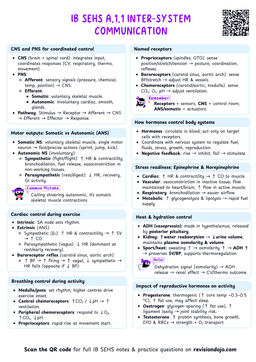Personality and the Big Five Traits
Personality
Personality refers to the enduring characteristics and behavior that comprise a person's unique adjustment to life.
- Personality refers to the unique and enduring patterns of thinking, feeling, and behaving that distinguish individuals.
- It is shaped by both genetic traits and environmental influences, making it a dynamic yet stable aspect of who we are.
Personality is the sum of the characteristics that make a person unique and allow comparisons between individuals.
The Trait-Based Approach
Trait-Based Approach
Researchers use psychometric tools to measure personality reliably, focusing on two key aspects: state, which refers to temporary thoughts, feelings, and behaviors in a given situation, and traits, which are consistent patterns of thinking, feeling, and behaving over time.
- The trait-based approach views personality as a collection of relatively stable characteristics
- These traits are measured using validated self-report questionnaires, such as the Big Five model.
- Traits predispose an individual to act the same regardless of the situation
- A conscientious swimmer who prepares well for competitions is likely to show the same behavior in other areas, such as job applications.
The Big Five Personality Traits
- The Big Five model is the most widely accepted framework for understanding personality. It includes five major dimensions:
1. Openness to Experience
Openness to Experience
Openness to experience is a personality trait reflecting curiosity, creativity, and a willingness to embrace new ideas and experiences.
- Openness to experience is the willingness to try new things, embrace vulnerability, and engage in original thinking.
- High Openness: Curious, imaginative, and adventurous.
- Low Openness: Prefers routine and familiarity.
A high-openness athlete might eagerly try a new training method, while a low-openness athlete might stick to their established routine.
2. Conscientiousness
Conscientiousness
Conscientiousness is a personality that reflects the tendency to be responsible, organized, hard-working, goal-directed, and to adhere to norms and rules.
- Conscientiousness is the tendency to control impulses, act responsibly, and pursue goals.
- High Conscientiousness: Organized, disciplined, and reliable.
- Low Conscientiousness: Impulsive and less focused on details.
A conscientious athlete will meticulously plan ahead for their training schedule, while a less conscientious one might skip sessions or plan less thoroughly.
3. Extraversion
Extraversion
Extraversion is a personality trait that describes someone who is outgoing, energetic, and sociable
- Extraversion is the extent to which individuals draw energy from social interactions.
- High Extraversion: Outgoing, energetic, and thrives in social settings.
- Low Extraversion (Introversion): Prefers solitude and finds social interactions draining.
An extroverted athlete may enjoy team sports such as netball and football, while an introverted athlete might prefer individual activities like running and cycling.
4. Agreeableness
Agreeableness
Agreeableness is a personality trait referring to individuals that are perceived as kind, sympathetic, cooperative, warm, honest, and considerate.
- Agreeableness is the ability to relate to others and maintain harmonious relationships.
- High Agreeableness: Kind, empathetic, and cooperative.
- Low Agreeableness: More competitive and less concerned with others' feelings.
- A highly agreeable athlete thrives in team sports, valuing cooperation, harmony, and strong interpersonal relationships.
- A less agreeable athlete may be more competitive, assertive, and individualistic, which can be beneficial in solo sports or leadership roles but may sometimes create conflicts in team settings.
5. Neuroticism
Neuroticism
Neuroticism refers to how individuals experience and manage their emotions. Those with high neuroticism tend to worry frequently, feel anxious or upset easily, and experience stress in various situations. Its opposite is emotional stability, which reflects a calmer and more resilient response to stress.
- Neuroticism is the tendency to experience emotional instability and perceive situations as distressing.
- High Neuroticism: Prone to anxiety, worry, and emotional fluctuations.
- Low Neuroticism (Emotional Stability): Calm and resilient under pressure.
An athlete with high neuroticism might struggle with performance anxiety and may struggle to bounce back after a bad race, while one with low neuroticism remains composed and more resilient .
TipTo remember the Big Five traits, use the acronym OCEAN: Openness, Conscientiousness, Extraversion, Agreeableness, and Neuroticism.
Measuring Personality Traits
- Psychologists use LOTS to categorize personality data into four main types:
- L-data: Lifetime history
- O-data: Observations from knowledgeable others (e.g., parents, friends)
- T-data: Experimental procedures and standardized tests
- S-data: Self-reported information


